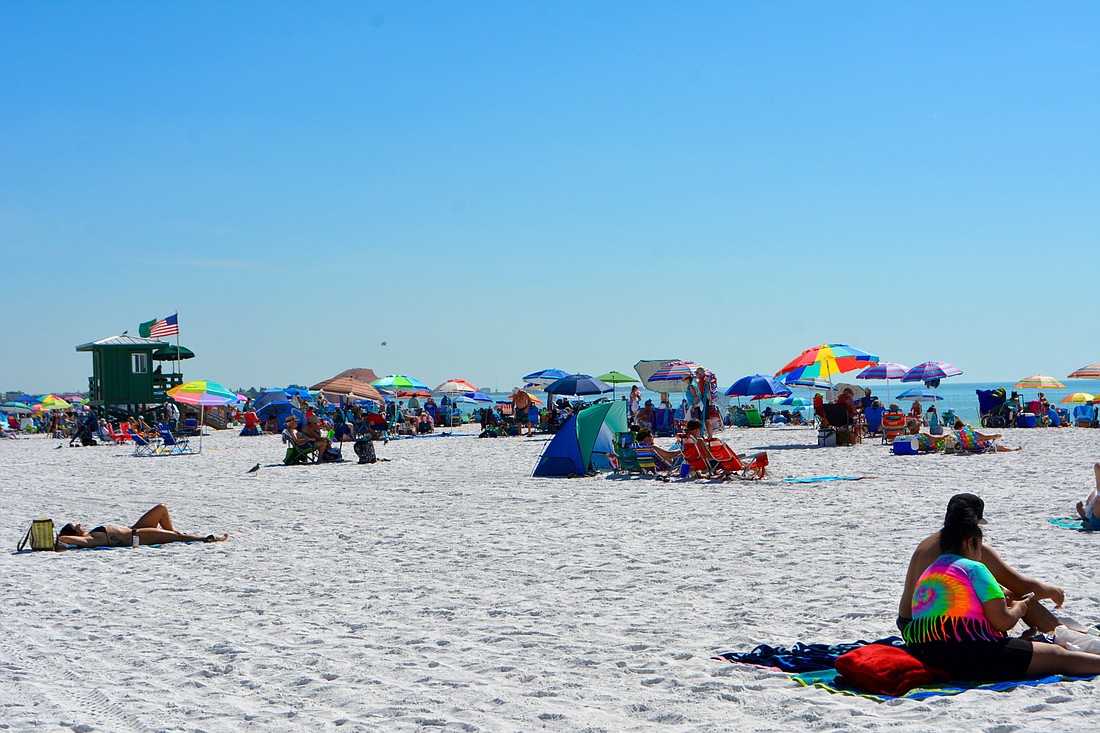- April 24, 2024
-
-
Loading

Loading

Following the past year’s red tide outbreak, Sarasota’s tourism industry has been feeling the heat — and its Tourist Development Tax had acted as the metric for that downturn.
The county collects a 5% tax on tourist lodging, defined as properties rented or leased for less than six months. Also referred to as “the bed tax,” the county dedicates between 25% and 30% of the Tourist Development Tax to promotion, while it allocates about 16% to 21% on stadiums, such as for the Orioles and the Braves.
Usually, the TDT is a steady source of income for the county. In 2018, Sarasota County amassed 17% more money than originally expected in initial budget projections for that stream of revenue.
But then red tide hit. And for the first time, the TDT actually fell about 4.1% below projections for the first six months of Fiscal Year 2019 — presumably as a result of the bloom, Sarasota County Financial Manager Kim Radtke said at the county’s mid-year budget update.
But, according to President Virginia Haley of Visit Sarasota — a promotional agency that is contracted to receive TDT funds from the county in exchange for promotional efforts — there might be more than one reason tourism-related revenue is down.
“It’s a combination of red tide and, also, we have newer hotels. And when there are more hotel rooms, you just see a dip in the rates,” Haley explained. “With increased hotel competition, it takes a little while to balance out.”
The question, then, is if the county will be able to balance out the lower-than-expected revenue before the fiscal year is out.
February was the first month the county saw an uptick of about 1.5% in TDT revenue, Radtke said. And now, she says she believes the county will likely break even by the end of the year.
But Haley isn’t so sure, particularly as her organization has recorded fewer summer reservations in the area compared with past years.
“I expect the summer months will be down,” Haley said. “I think that we will end the year with a loss in the TDT. But our goal is to try to keep it as small a loss as possible.”
To try to combat the negative light Sarasota was thrust into as a result of the red tide bloom, Haley says Visit Sarasota changed its approach to advertising in a few ways.
“During the actual red tide outbreak itself, we changed our messaging to focus on all of our offerings that are not on the beach,” Haley explained. “So, we focused the nature opportunities, looking at our cultural amenities ... we also did a big, heavy push on retail called ‘Shoptember.’”
Additionally, she explained how Visit Sarasota has continued to pull back on print and broadcasting advertisements, leaning instead on a digital-first marketing approach — which is easier to track and adjust, should another red tide outbreak occur.
But what if the numbers don’t continue to climb?
“We would end up having to look at the budget and make some adjustments,” Radtke said. “We (at the county) would be looking at reducing some areas of the budget where we could, or we would utilize our fund balance (savings) to make up the difference.”
Meanwhile, Visit Sarasota has continued to prepare for the possibility the tax revenue won’t recover as much as expected.
“One thing we did this year was we moved our existing budget around. So we did much heavier promotions at the beginning of the year in order to have a positive season,” Haley explained. “Usually we pretty much just focus on the offseason. We also have grants from Visit Florida to aid in that recovery from this year.”
But in all, Radtke says she believes the TDT will recover by the end of the 2019 fiscal year — as will the overall tourism-related landscape in Sarasota.
“We probably won’t see numbers like we’ve seen in the past, but even if we get to a point where we’re at, say, 3% [above budget projections], that would still be a good year for us,” she said. “I’m feeling pretty positive. As long as red tide goes away, we’re good.”